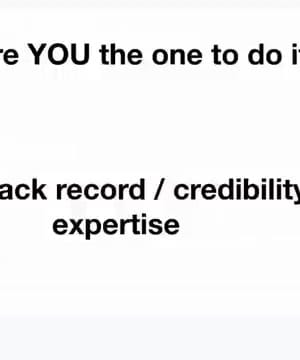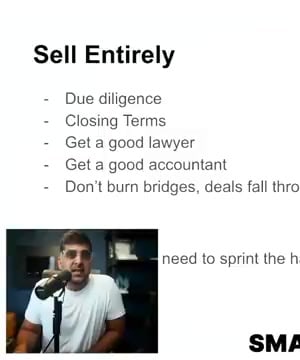How to write a pitch deck?
Sources:
Creating a compelling pitch deck is crucial for attracting investor interest and successfully securing funding. Here are some tips based on insights from My First Million podcast:
Structure of a Good Pitch Deck
-
Title Slide:
- Include your company name and a subtitle that clearly explains your mission or what you do. For example, "We are helping millions of people fix their insomnia with skills, not pills" (1).
-
Credibility Slide:
- Showcase your key accomplishments and background to establish your credibility. Highlight any impressive metrics or notable achievements. For instance, mentioning that your co-founder authored a New York Times bestseller can catch attention (1).
-
Problem and Solution:
- Clearly outline the problem your business solves and how your solution addresses it. Briefly mention your unique selling points.
-
Unit Economics:
- Provide detailed unit economics to show you’ve thought through the business model. Explain how money is made, cost of production, and profit margins (2).
-
Market Opportunity:
- Present data on market size and potential growth, showing there's a significant demand for your solution.
-
Traction and Milestones:
- Include user growth, revenue figures, or user engagement metrics to demonstrate traction. Discuss future milestones and how additional funding will help you achieve them (2).
-
Team Slide:
- Highlight the expertise and background of the founding team to convey why you are the team to execute this idea.
-
Financial Projections:
- Provide realistic financial projections for the next few years to show potential returns on investment.
-
Pot Sweetener:
- Save a piece of good news or a positive development for the end of your presentation. This helps leave your audience on a high note. For example, mentioning a newly secured partnership or milestone (3).
-
Call to Action:
- End with a clear next step or ask, such as inviting investors to join the round or scheduling a follow-up meeting.
Additional Tips
- Engagement: Keep the slides visually appealing but simple. Avoid clutter and focus on the key messages (1).
- Readiness: Ensure you have all due diligence documents ready and that your closing terms are clear if you're near the end of a deal (4).
- Iteration: Be open to getting and implementing feedback to refine your deck. Enlist help and iterate until the pitch reflects the best of your business (5).
Shaan Puri’s approach has been detailed in his masterclass on pitching, which includes a downloadable template to aid in creating your own pitch deck (6). You can find this resource and more guidance on his personal site.
By following this structure and these tips, you can craft a pitch deck that not only captures but also keeps the attention of potential investors.
RELATED QUESTIONS-





